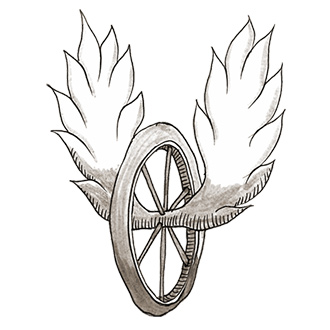
Related Questions
- Are Santa’s reindeer used for propulsion or navigation?
- How do the blades of a jet engine start turning?
- Can helicopters fly upside down?
- Can robotic submarines collect specimens at any ocean depth?
- Why don’t spacecraft burn up or veer off course during reentry from space?
- Can I start my car with a voice command?
- Is there a way to detect my car’s keyless remote if I don’t know where it is?
- Why does traffic bottleneck on freeways for no apparent reason?
- How does a jet engine work?
- Can a honeybee cause a sonic boom if it travels fast enough?
How does an aircraft steer while taxiing on a runway?
When it’s going slow, it’s like your car. But when it’s going fast…
By Elizabeth EarleyWhile the large commercial aircraft that traverse our skies every day don’t look anything like the cars we drive, there is at least one similarity between the two vehicles. The same method that cars use to steer on the road is used by airplanes as they’re tooling around on airport “roads” between the terminal and runways, says Aaron Johnson, a PhD candidate in aeronautics and astronautics. “It’s pretty simple — the pilot turns the tiller in the cockpit and the plane goes where he wants,” he says Johnson.
The “tiller” Johnson is referring to has nothing to do with cultivating soil in your garden. An airplane’s tiller is a steering wheel in the cockpit, and while it works the same way as the one in your car, it looks a lot different. It’s a small wheel or crank lying flat on the side of the control panel, and the pilot only uses one hand to operate it. Turning the tiller turns the wheels directly under the nose of the aircraft, and the rest of the airplane follows. By controlling the front wheels directly, the aircraft can make very sharp turns, navigating the network of taxiways at any airport.
Only large commercial airplanes have tillers, Johnson notes. “In some smaller aircraft, the pilot turns the nose wheel through the rudder pedals. But other smaller aircraft don’t have the hardware required to turn their wheels. So they either stay fixed straight or are free-swiveling, like the ones you see on shopping carts.” As a result, pilots have to use a different technique called differential braking. This technique works by applying the brakes to the wheel on one side of the airplane, which causes the aircraft to pivot around that wheel and gives the pilot control over which way his airplane’s headed. Like using the tiller, pilots can use differential braking to make sharp turns all over the tarmac. Also, if the airplane has an engine on each side, the pilot can turn by using a technique called differential throttling. By adding thrust to the engine on the side opposite the stopped wheel, the airplane turns even more easily.
Tillers and differential braking or throttling work when the plane is traveling slowly, but when it’s going fast, everything changes. If the pilot gave the tiller a spin when the plane was barreling down the runway on takeoff, the nose wheel could snap off (something pilots generally try to avoid). Using differential breaking in the same situation could also lead to disastrous consequences. So, pilots of both large and small aircraft use the rudder to make slight corrections to the left or right. “A rudder is essentially a symmetrical wing turned on its end, which deflects the air to make small corrections in direction,” says Johnson. “It doesn’t give you a lot of movement, but it’s enough to keep you aligned straight during takeoff or landing.” Once the airplane’s in-flight, the rudder continues to help the airplane make turns, even though the wheels are high above the ground.
Thanks to 17-year-old Saurabh from Raipur, India, for this question.
Posted: October 16, 2013